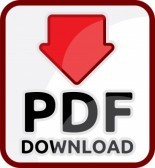E. V. Shein1,2, E. B. Skvortsova2, S. S. Panina1, A. B. Umarova1, К. А. Romanenko2
1Lomonosov Moscow State University Faculty of Geography, Russia, 119991, Moscow, 1 Leninskiye Gory
2V.V. Dokuchaev Soil Science Institute, 119017 Moscow, Pyzhevskii 7, bld.2
The results of field experiments conducted on the medium-loamy agrosoddy-podzolic soil showed that in the presence of the hydraulic head of water at the soil surface the water is moving predominantly through migration ways, thus decreasing the hydro-depositary properties of soils. The water movement was studied by a special method performed in two soil monoliths identical in size (42 cm in diameter and 60 cm high). The monolith walls were covered by a film, foamed and buried to avoid the lateral water loss. The monoliths were simultaneously saturated with water: one of them – with the constant head of water in 5 cm, the other monolith - with fine-dispersed sprinkler without the formation of the water layer at the soil surface. The objectives of this study were to simulate the water movement under conditions of small headed infiltration and without head of water as well as to compare the calculated and experimental data with the view of assessing the most adequate experimental material - the main hydro-physical characteristics obtained experimentally by empiric methods or those calculated by hydrological constants and soil properties (pedo-transmitting functions). It seemed reasonable to conclude that the use of regional pedo-transmitting functions provides better results as compared to main hydrophysical characteristics, the latter being obtained by tensiometers and capillarimeters are better than the pedo-transmitting functions used the particle-size distribution as a prediction in Agrotool program (ROSETTA database) and pedoransmitting functions on the basis of Voronin’s “secant”.
Keywords: soil hydrophysics, mathematical model, experimental provision, pedo-transmitting functions.
REFERENCES
1. Bouma J. Hydropedology as a powerful tool for environmental policy research, Geoderma, 2006, Vol. 131, pp. 275–280.
2. Catchment water balance modelling in Australia1960–2004, Bougton. Agricultural Water management, 2005, Vol. 71, pp. 91–116
3. Globus A.M. Experimental hydrophysics soil, Lenngrad, 1969, 356 p.
4. Harou J.J., Pulido-Velazkes M., Rosenberg D.E., Azuara J.M., Lund J.R., Hiwitt R.E. Hydro-economic models: Concepts, design, application atd future prospects, J. Hydrology, 2009, Vol. 375, pp. 627–643.
5. Poluektov R.A., Fintushal S.M., Oparina I.V., ShatskikhD.V., Terleev V.V., Zakharova E.T. Agrotool – a system for crop simulation, Archves Agronomy Soil Sci., 2002, Vol. 48, Issue 6, pp. 609–635.
6. Shein E.V., Arkhangel'skaya T.A., Goncharov V.M., Guber A.K., Pochatkova T.N., Sidorova M.A., Smagin A.V., Umarova A.B. Field and laboratory methods for studying the physical properties of soils and conditions, Moscow, 2001.
7. Shein E.V., Gudima I.I., Mokeichev A.V. Methods for determination of hydro-core functions for modeling purposes, Vest. Mosk. un-ta. Ser.17, Pochvovedenie, 1993, № 2, S. 18–24.
8. Shein E.V., Kokoreva A.A., Gorbatov V.S., Umarova A.B., Kolupaeva V.N. Evaluation of the sensitivity setting and compare migration patterns of pesticides in the soil according to lysimetric experiment, Eurasian Soil science, 2009, Vol. 42(7), pp. 824–833.
9. Shein E.V., Pachepskii Ya.A., Guber A.K., Chekhova T.I. Features of the experimental determination of the hydrophysical and hydrochemical parameters of mathematical models of moisture and salt transport in soils. Eurasian Soil science, 1995, No. 12, pp. 1479–1486.
10. Shein E.V., Spiridonov Yu.A., Smetnik A.A. The migration of pesticides in soil, Moscow, 2005, 336 p.
11. Šimůnek J., van Genuchten M. Th. and Šejna M. The HYDRUS-1D Software Package for Simulating the One-Dimensional Movement of Water, Heat, and Multiple Solutes in Variably-Saturated Media, Department of Environmental Sciences University of California Riverside, 2005.
12. Theories and techniques of soil physics (Ed.) Shein E.V., KarpachevskiiL.O., Moscow, Kiev, 2007, 616 p.
13. Troshina O.A. The physical properties of the elements and hydrothermal regime of integrated soil Vladimir plain field (for example, an agricultural field VNIISKH): Extended abstract of candidate’s thesis, Moscow, 2009. 30 c.
14. Umarova A.B. Preferential flow of moisture in the soil and the importance of forming patterns in the functioning of the soil, Moscow, 2011. 266 p.
15. Vadyunina A.F., Korchagina Z.A. Methods for studying the physical properties of soils, Moscow, 1986.
16. Van Genuchten M.T., Leij and Yates S.R. The RETC code for quantifying the hydraulic functions of unsaturated soils, US Salinity Lab, Riverside, CA (1991).
17. Wilding L.P., Lin H. Advancing the frontiers of soil science towards a geoscience, Geoderma. 2006. Vol. 131, pp. 257–274.
